Samsung The Frame LS03D (2024) is not an ordinary television that you can place in the corner and forget after two days. Here, it is immediately evident that the manufacturer has focused on something more than just playing films. First, the “Art” mode captures attention – with just a few clicks, we can turn The Frame into a digital gallery, displaying works that, in combination with the matte screen, truly resemble a real framed painting. And speaking of the frame, we have the option to customise its colour to perfectly match our interior. Additionally, the package includes a wall mount, allowing the television to hang almost “flush”, which further enhances the impression of engaging with an image rather than a typical screen. The matte screen provides excellent protection against reflections, which together with high brightness (650 cd/m²) works well in bright sunlight. Furthermore, we have a VA panel with quite decent contrast and a refresh rate of 120 Hz, so when watching sports or playing dynamic titles, everything appears smooth and pleasant to the eye. If we also add a gaming features package – VRR, ALLM and HGiG – it’s clear that Samsung has also considered console and PC enthusiasts. As a result, Samsung The Frame can be both a picturesque decoration for the living room and a reasonably effective gaming monitor. The mentioned One Connect is another useful gadget – it allows us to hide all the cables in one place, with a thin wire connecting the television to this magical box. If we like order, this solution is made for us. Another advantage is the Tizen system – easy to use, fast, and full of applications. We may not find absolutely everything in it (e.g. the Tidal app), but it still provides a wide range for exploring various streaming platforms. Of course, there’s no rose without thorns. The lack of local dimming is noticeable in dark scenes, where blacks become less pronounced. We also need to remember that there is only one HDMI 2.1 port here, so if we want to connect more devices at 4K and 120 Hz, we may feel limited. Additionally, the viewing angles are rather average, so it’s better for the most important viewer (that is us) to sit directly in front of the television. For fans of Dolby Vision, this will also not be an ideal choice, as The Frame LS03D only supports HDR10 and HDR10+. Furthermore, the sound – as with most slim televisions – is mediocre, so it’s worth considering a soundbar if we care about clearer bass and a bit deeper sound. Despite these weaker points, The Frame still makes a great impression. It is striking, stylish, and versatile – perfect for watching the latest hits as well as displaying reproductions of paintings on the wall. If we value an unusual appearance, high brightness, and at the same time want to play with low input lag, this model will be a perfect choice. And although it is not a leader in terms of value for money nor a technological “monster” in terms of picture quality, it has something that simply makes it likable. It is a device that stands out with its unique character and can blend into any interior, attracting attention both in television mode and as a digital art gallery.
- Matching (Score)
- Our verdict
- TV appearance
- Where to buy
- Contrast and black detail
- HDR effect quality
- Factory color reproduction
- Color reproduction after calibration
- Smoothness of tonal transitions
- Image scaling and smoothness of tonal transitions
- Blur and motion smoothness
- Console compatibility and gaming features
- Input lag
- Compatibility with PC
- Viewing angles
- TV efficiency during daytime
- Details about the matrix
- TV features
- Apps
- Playing files from USB
- Sound
Samsung The Frame LS03D vs LG OLED C5
Direct compare
Check the best price offer:
LG OLED C5The Frame / LS03D
C5 / C54 / C5ELB / C51

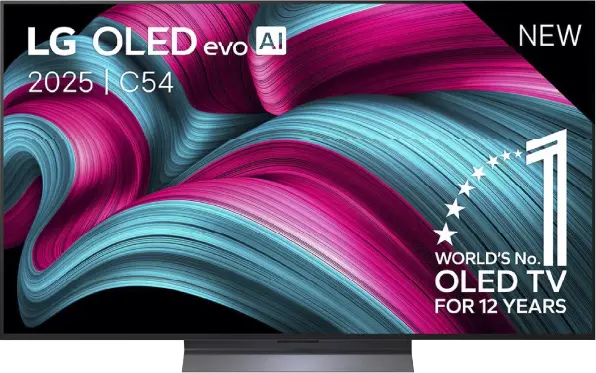
Panel type: LCD VA
Resolution: 3840x2160
System: Tizen
Model year: 2024
Complete the survey to find out the result

Panel type: WRGB OLED
Resolution: 3840x2160
System: WebOS
Model year: 2025
Complete the survey to find out the result

Overall rating
7.0
8.2
Movies and series in UHD quality
6.9
8.5
Classic TV, YouTube
6.5
8.9
Sports broadcasts (TV and apps)
6.2
8.6
Gaming on console
8.2
9.4
TV as a computer monitor
7.6
8.6
Watching in bright light
6.5
6.2
Utility functions
7.8
7.9
Apps
8.7
9.1
Sound quality
5.8
7.2
Complete the survey to find out what fits your preferences
Advantages
Unique design and 'Art' mode – the television fits perfectly into interiors and serves as a digital picture frame
Matte panel – effectively reduces light reflections
Possibility of personalising the television's frames – adapting the appearance to the interior
Dedicated wall mounts included (value approx. 400 PLN) – the television can fit practically flat against the wall
High brightness (650 cd/m²) – excellent visibility even in well-lit rooms
VA panel – decent contrast
Good motion fluidity – 120Hz*
Support for VRR, ALLM and HGiG – a full set of gaming features
Smooth tonal transitions – one of the best results in this category among the tested televisions
One Connect module – minimises cable clutter, ensuring tidiness
Tizen system – responsive, intuitive
*Does not apply to the 43 and 50-inch variants (60Hz)
Excellent black levels and infinite contrast thanks to the OLED panel
Above-average brightness (for an OLED TV)
Nearly reference image quality after calibration
A full suite of features for gamers: 4xHDMI 2.1, low input lag, HGiG, VRR and more
Very good motion smoothness – 144 Hz OLED panel
Intuitive and modern WebOS system
Convenient Magic remote control with gyroscope
Disadvantages
Lack of local dimming – affects the quality of black, especially in dark scenes
Average viewing angles – the picture loses quality when viewed from a wider angle
Average sound quality – flat sound without depth
Limited number of HDMI 2.1 ports – only one port supports full 4K@120 Hz
Lack of Dolby Vision – the television only supports HDR10 and HDR10+
Different versions of the remote in derivative models – it's hard to predict which version we will get
Average reflection suppression – it can be distracting in very bright light
No support for DTS:X – an external amplifier is required for full compatibility with this format
Our verdict
LG C5 is a very successful continuation and, in some aspects, even a step forward compared to last year's model C4. The biggest change is the significantly higher brightness – for the first time in the history of the C series, the barrier of 1000 nits has been exceeded, which greatly improves the quality of the HDR effect. Both films and series look more dynamic as a result, and bright scenes finally have the proper "glow". After calibration, the picture quality is nearly reference-level, and one could get the impression that we are dealing with equipment that is much more expensive than its price suggests. C5 is also one of the best choices for gamers – four full HDMI 2.1 ports, low input lag, support for VRR, G-Sync, and correctly implemented HGiG. Additionally, the 144 Hz panel makes not only gaming but also watching sports pure pleasure. The convenient WebOS system and the Magic remote with cursor control function also deserve praise – everything works smoothly and intuitively. This is a television that you simply want to use.
However, there were a few minor reservations. This year, LG has decided to abandon support for DTS codecs, which may be problematic for those using physical media and collections of Blu-ray films. It is also worth noting the confusion regarding the different versions of the remote – depending on the model designation, we may receive a completely different remote than the one we held during our tests. Despite these few comments, LG C5 is a television that makes an excellent impression in almost every regard. Brightness, colours, gaming features, smoothness of the image, and overall build quality make it one of the best OLEDs in its class.
TV appearance





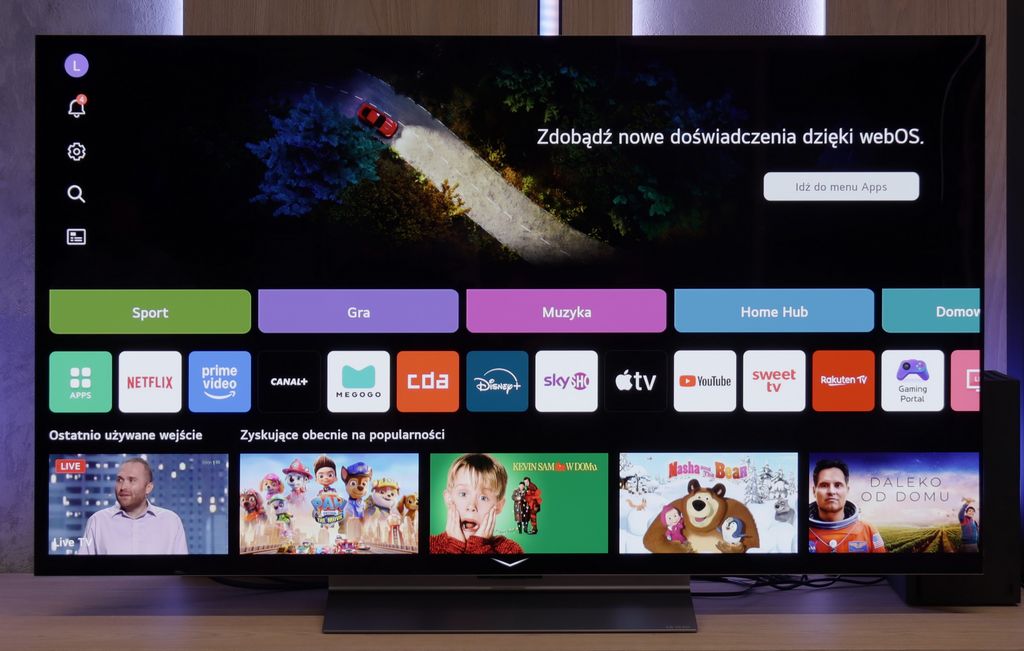
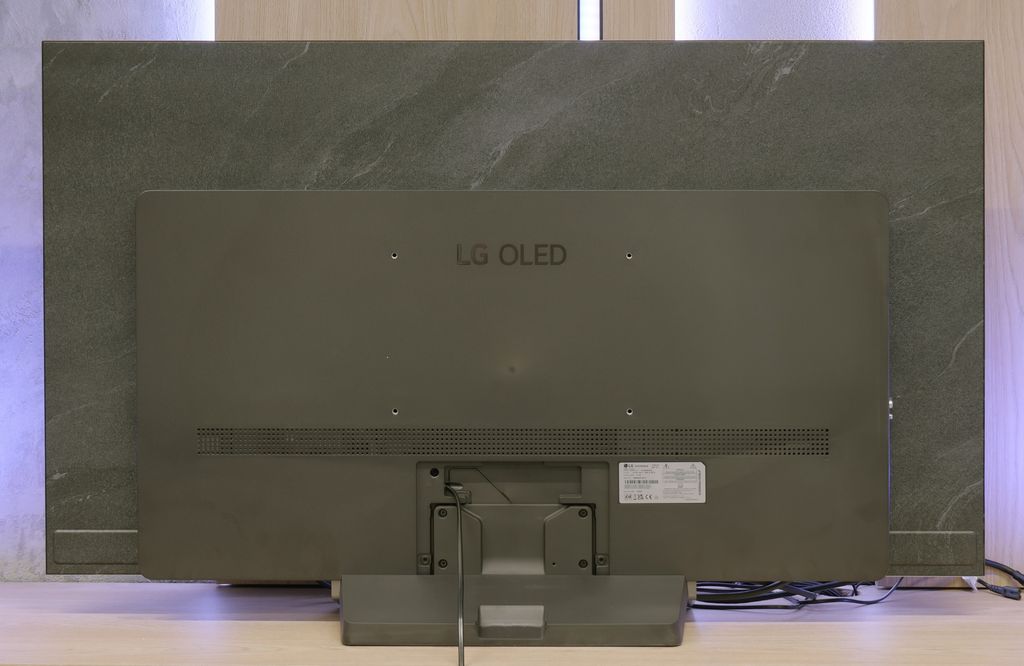
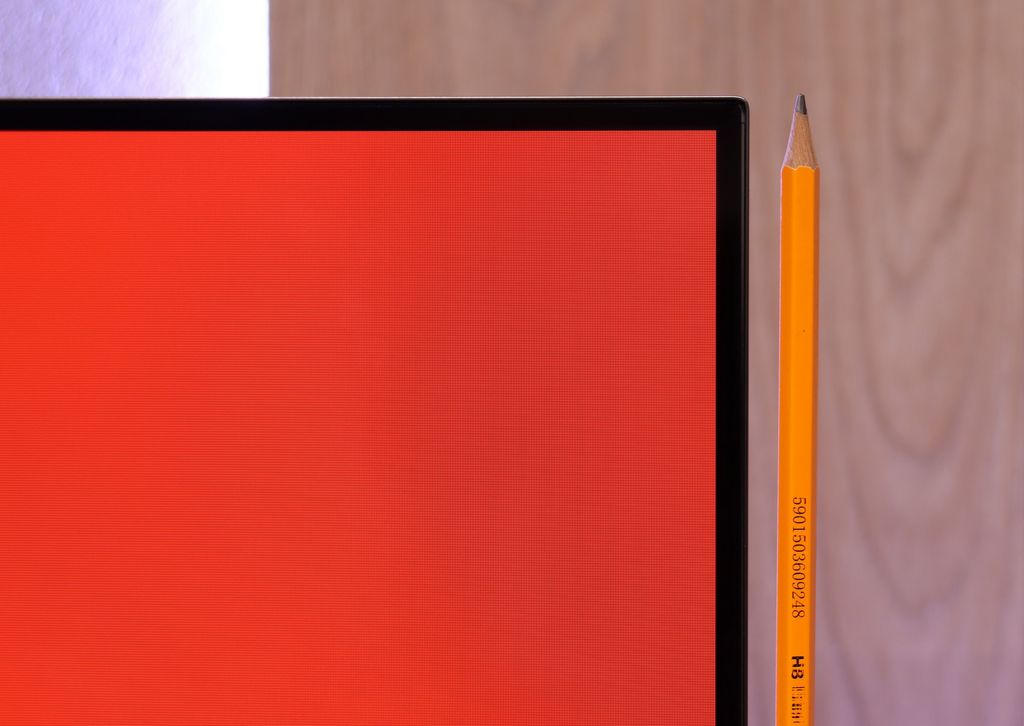
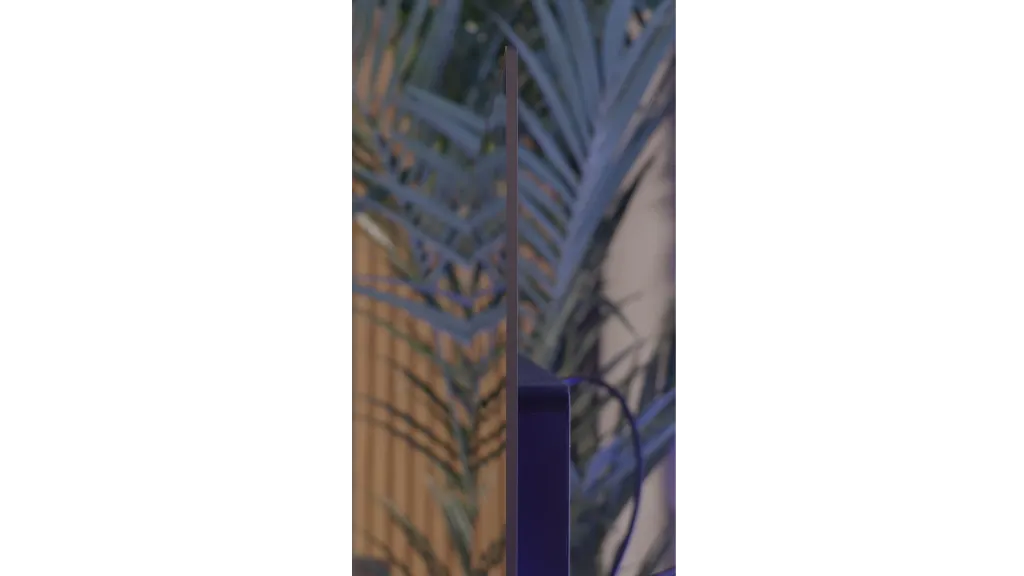
Contrast and black detail
5.6/10
10/10
Local dimming function: No
Contrast:

Result
4,200:1

Result
4,800:1

Result
5,100:1

Result
5,300:1

Result
3,850:1

Result
∞:1

Result
∞:1

Result
∞:1

Result
∞:1

Result
∞:1
Halo effect and black detail visibility:

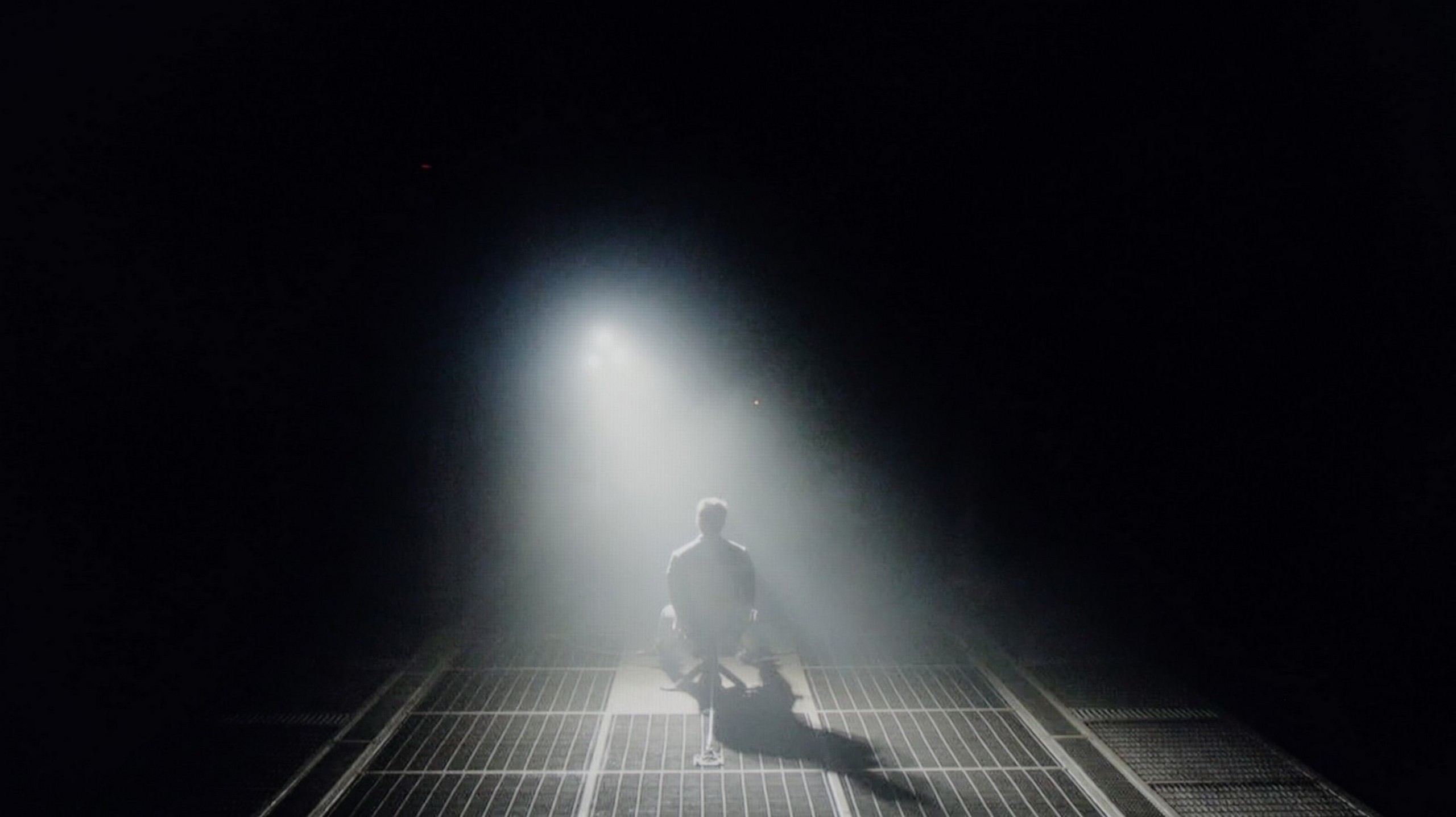
Samsung The Frame uses a VA panel, which in itself provides quite high contrast. In our tests, the results oscillated around 4000–5000:1, which will be more than enough for most users. However, the lack of local dimming is noticeable, especially on more demanding test slides. In dark scenes, it can be observed that black has a subtle hint of navy blue. During the day or in a well-lit room, this will not be an issue, but during an evening viewing, more discerning viewers may feel a slight deficiency.
In the category of black and contrast, the LG C5 fits perfectly into what we have come to expect from OLED televisions – it is simply ideal. Thanks to the use of an organic matrix (WOLED), each pixel shines independently, which results in infinite contrast and perfect black. There are no halos, streaks, or other typical LCD television artifacts here. Details in bright parts of the image are perfectly visible, and watching in a darkened room is pure pleasure. If someone is looking for a television for evening screenings with great contrast – the C5 is a very strong contender.
HDR effect quality
6.4/10
7.2/10
Luminance measurements in HDR:

Result
679 nit

Result
663 nit

Result
712 nit

Result
698 nit

Result
726 nit

Result
1079 nit

Result
1059 nit

Result
1120 nit

Result
1094 nit

Result
707 nit
Scene from the movie “Pan” (about 2800 nits)


Scene from the movie “Billy Lynn” (about 1100 nits)


Static HDR10


Dynamic: HDR10+
Dynamic: Dolby Vision


HDR luminance chart:
LG OLED C5
HDR luminance
Luminance of RGB colors
Samsung The Frame LS03D
HDR luminance
Samsung The Frame LS03D performs really well with brightness. Results of 700 nits make bright elements on the screen look striking and detailed, whether they illuminate the entire screen or appear as small points of light against a dark background. In more demanding scenes, like the fourth sequence from the film Sicario 2, the black levels are average, but we have already discussed this in the section on contrast. As for brightness – the television definitely excels here. An additional advantage is the quantum dot coating, which is QLED technology. Thanks to this, the colour palette coverage has been improved, although The Frame does not stand out in this regard compared to the competition.
LG C5 finally does what we have been waiting for years in the C series – it exceeds 1000 nits of brightness! This is a significant change compared to previous models in the series, and it is very important – because most HDR content on streaming platforms is now created around such luminance. The image finally has the proper "shine," and the details in the highlights look as they should even without the use of dynamic metadata. However, there are scenes where the C5, like most OLED televisions, has certain issues. Especially when the screen needs to light up completely. In our test sequences, such as the bright shot from the film The Meg, the brightness clearly drops. Don't get us wrong, this result is not bad; it's more a reminder that OLED technology still has its limitations. Year by year they are becoming smaller, but still.
As for the colours? They are very good. Although the C5 does not match OLEDs with QD-OLED or Tandem RGB panels, the DCI-P3 coverage of 97% and 73% BT.2020 will satisfy even the more demanding viewers. The colours are saturated, natural, and very consistent in HDR material.
Factory color reproduction
7/10
8.2/10


Factory Mode
After calibration


Factory Mode
After calibration
Samsung offers several picture modes on its televisions, but undoubtedly the Filmmaker Mode is the one that should provide the most natural representation of content. Unfortunately, as is often the case with mass production, the differences between units can be considerable, and our tested model was not free from a few issues.
In the case of SDR content, the white balance leaned heavily towards red, with a slight boost in blue. This effect was particularly noticeable in comparison images – for example, in a photograph of a boy whose face was unnaturally flushed. The gamma, or brightness characteristic, also did not perform perfectly – the image was slightly brightened, which detracted from its depth.
In 4K HDR content, the white balance was again dominated by red, this time in combination with green. Meanwhile, blue clearly lost intensity, which was easy to notice on the Color Checker palette, where colours began to "drift" in the wrong direction. The EOTF curve, responsible for brightness in HDR content, showed that the television has a tendency to excessively brighten the image, especially in the darkest elements of scenes.
Overall, while it did not look terrible, it definitely required adjustment. Fortunately, Samsung offers extensive calibration options, which provides the chance for a significant improvement in image quality. Therefore, we proceeded with professional calibration to extract the full potential from this television.
LG C5, like other televisions we have tested, has been checked in the best possible factory mode – which remains the Filmmaker Mode. And here we have good news: in SDR materials, LG has once again done a solid job. The white balance and colour reproduction right out of the box are at a very high level. Most errors – both in balance and in the colour test (Colour Checker) – did not exceed a ΔE value of 3, which is the threshold above which differences become visible to the naked eye. Such factory settings would be desirable in a significantly larger number of televisions!
However, the situation looks different for HDR content, which is precisely what the C series was created for. Here, the C5 performs somewhat worse. The excessive presence of blue in the white balance causes the image to appear distinctly cooler – which affects, for instance, unnaturally pale skin tones or a slightly shifted tone of the entire scene. Fortunately, LG provides very precise calibration tools, and we – as always – made use of them.
Color reproduction after calibration
8.1/10
9.4/10




After professional calibration, the Filmmaker Mode shows its full potential. The white balance in HD content is exemplary – errors at the level of 0.5 indicate almost perfect colour reproduction accuracy. The image now looks natural, and the colours are precisely as they should be. In 4K HDR content, the effect is not quite as perfect, but it still maintains a really high level. The colours are vibrant, well-saturated, and the overall picture quality can be impressive.
So where does the problem arise, given our praise for colour reproduction? Unfortunately, the entire experience is marred by brightness characteristics. The gamma in HD content looks decent, but in 4K HDR it's not as good. The EOTF curve shows that the television excessively brightens certain parts of the image, which is a result of construction limitations. The lack of local dimming means that the television cannot accurately control the differences between the brightest and darkest areas of the screen. This is a barrier that simply cannot be overcome in this model.
Nonetheless, after calibration, Samsung The Frame LS03D offers excellent colour reproduction, particularly in HD content, and the overall appearance is considerably better than before the settings were corrected.
We must honestly admit – in the case of the LG C5, very little was needed to achieve nearly perfect picture quality. After calibrating, we managed to reach compatibility with reference screens at a level that impresses even when compared to significantly more expensive models. The image after our adjustment looks exactly as filmmakers and series creators would want it – without colour distortions, with natural depth and subtle texture. LG has done a great job this year regarding factory settings and calibration potential. Chapeau bas!
Smoothness of tonal transitions
9.7/10
8.2/10












This is one of the best televisions we have had the opportunity to test in terms of the smoothness of tonal transitions. Any potential imperfections are so minor that you really have to strain your eyes to notice them. They are subtle enough that we only deducted a symbolic fraction of points in this category. Without a doubt, this is one of the greatest advantages of this model. It is possible that such a good effect is partly due to the matte screen coating, which gently masks any irregularities in the colour gradation. The smoothness of tonal transitions in Samsung The Frame LS03D is at a level that will satisfy even exceptionally demanding users. Kudos to LS03D!
WOLED televisions have not been known for their perfect fluidity of tonal transitions until now. It has often been noticeable that there were subtle bands between colours – particularly in the darker parts of the image – which gave the impression that the hues did not transition smoothly, but rather "stair-stepped" slightly. This year, LG has made significant progress. In the C5 model, this issue has largely been eliminated. Indeed, in very dark scenes, subtle boundaries between colours can still be seen, but they are non-intrusive enough that hardly anyone except for more discerning viewers will notice them. For most users, the fluidity of tonal transitions in the C5 will simply be impeccable.
Image scaling and smoothness of tonal transitions
7.1/10
7.8/10
Smooth transition function

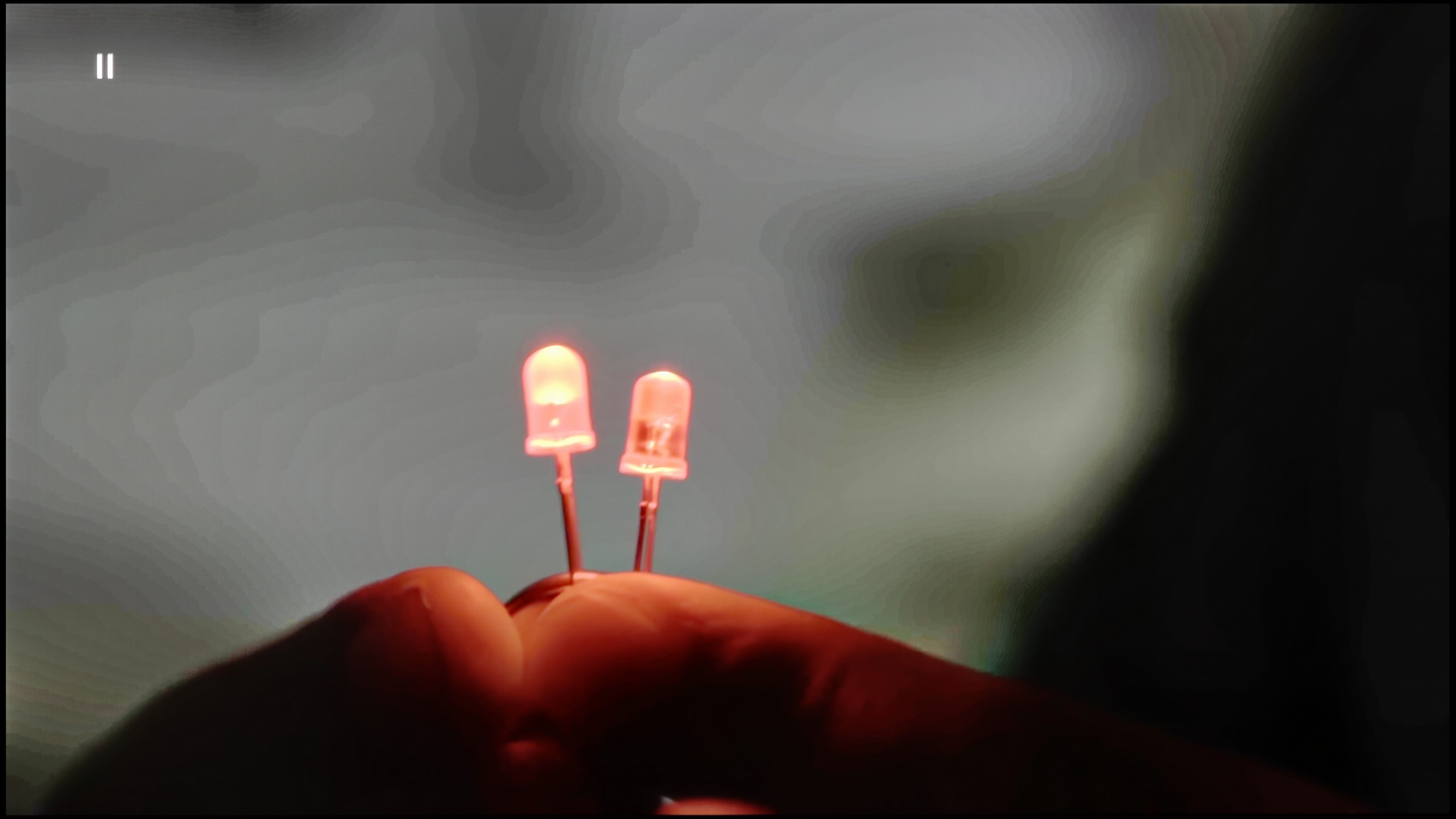
Image without overscan on the SD signal


It’s time to check how Samsung The Frame LS03D performs with older, lower-quality materials. We already know that the fluidity of tonal transitions is at a very high level here, so we were curious to see how the television would handle smoothing them out.
The noise reduction feature in the "Standard" setting does its job well – tonal transitions are noticeably smoothed out, and at the same time, the image does not lose too much detail. However, it is worth noting that this effect also smooths out film grain, so its use will be a matter of individual preference.
When it comes to image scaling, the television also performed really well. The test chart turned out solid – the model was reproduced correctly, with clear details. The branches in the background, though slightly frayed in places, generally appear natural and do not stand out as imperfections.
LG C5 handles lower quality materials really very well. One of the main problems older WOLEDs faced was posterisation – that is, unwanted “stair stepping” in colour transitions. The C5 utilises a system feature that smoothens these transitions, which works surprisingly effectively. The banding effect is nearly completely eliminated, and the picture gains in coherence. Compared to last year's model, we have the impression that this feature works slightly less effectively – but the good news is that it does not undermine the structure of the image. Film grain, textures, and details remain on the screen – nothing is unnaturally smoothed out.
The C5 also excels at enhancing the quality of older recordings. Thanks to the α9 Gen6 processor (8th gen), the "scaling to 4K" performs really solidly. The image is clear, the details are sharp, and the only minor downside might be slightly noticeable edge sharpening on some borders. However, there is no issue with overscan here – the image is neither artificially cropped nor shifted, which is a significant plus and still not a given.
Blur and motion smoothness
6.4/10
8.5/10

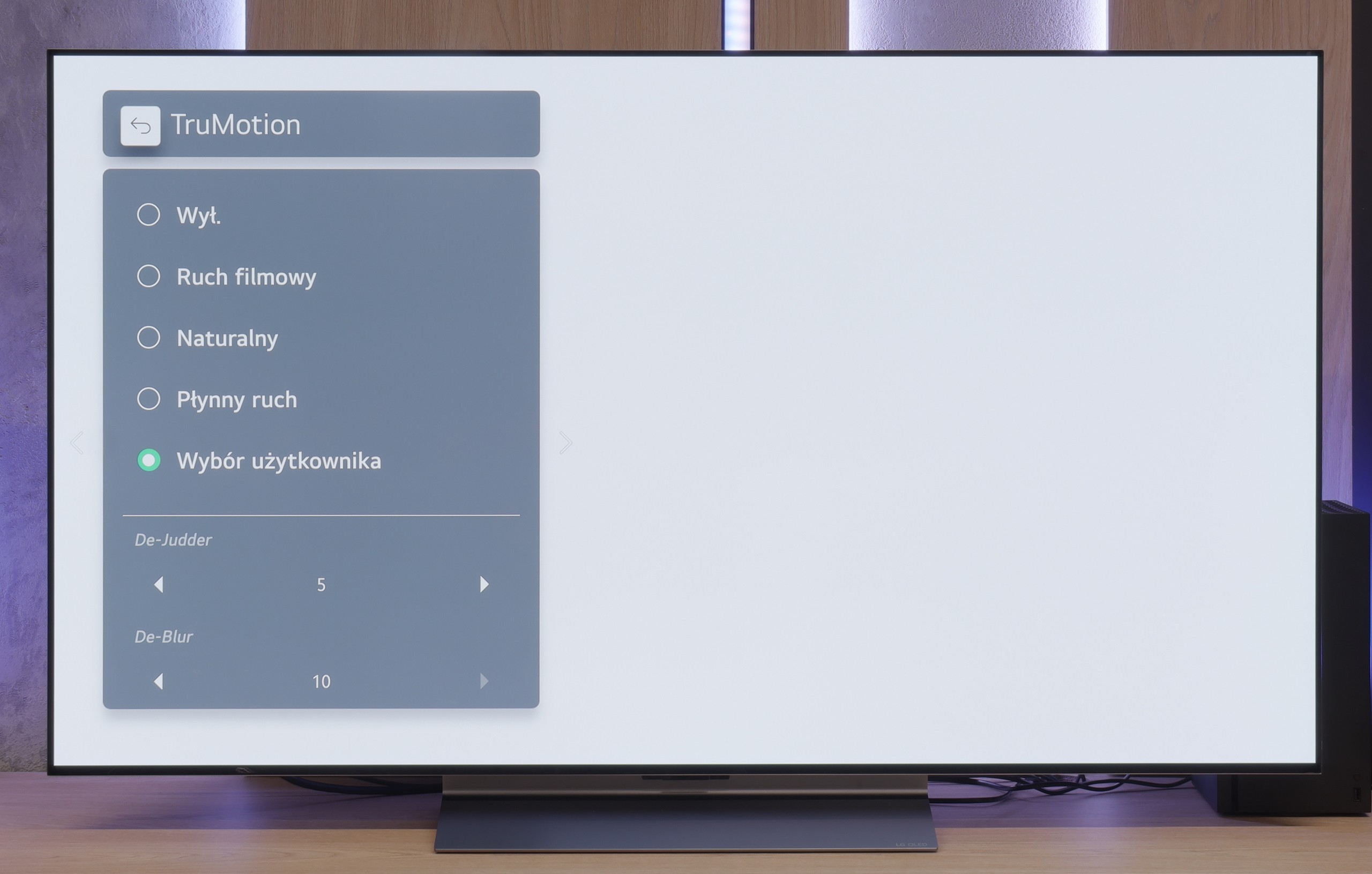
Blur (native resolution, maximum refresh rate):






Firstly, it is worth noting that the model we tested in the size of 55 inches, like the 65, 75 and 85-inch versions, is equipped with a 120 Hz panel. Unfortunately, the 43 and 50-inch variants of this series only offer 60 Hz panels, which is worth keeping in mind when making a purchase. As for improving motion fluidity, the television offers a feature called “Picture Clarity”. This is a classic motion smoother that gives users the ability to adjust it using two sliders:
Motion blur reduction – this controls the sharpening of the image in dynamic scenes. The higher the value, the less blur during quick camera movements or moving objects. However, overly aggressive settings may cause the image to become unnatural, appearing like a “soap opera”.
Judder reduction – this slider influences the smoothness of frame playback, particularly in materials with a lower frame rate, such as films (24 fps). Higher settings can smooth motion but may also lead to excessive “plasticity” of the image.
Both sliders operate on a scale from 0 to 10, allowing for precise adjustment of the effect to one’s own preferences. It is worth experimenting with the settings to find the perfect balance between fluidity and a natural appearance of the image. We recommend setting them as shown in the picture.
The LG C5 is equipped with a 144 Hz display, and this, combined with the virtually zero response time of the OLED pixels, makes it one of the best screens for watching dynamic content. It doesn't matter whether it's sports, fast-paced games, or just action – the image is razor-sharp.
And what about movies at 24 frames? LG thought of that too. The built-in "TruMotion" smoother allows you to adjust the picture to your own preferences. The "de-judder" slider increases fluidity in films, while "de-blur" gently reduces motion blur – though to be fair, it is nearly invisible here anyway.
Console compatibility and gaming features
8.8/10
10/10
- ALLM
- VRR
- VRR range48 - 120Hz40 - 144Hz
- Dolby Vision Game Mode
- Correct implementation of HGIG
- 1080p@120Hz
- 1440p@120Hz
- 4K@120Hz
- Game bar

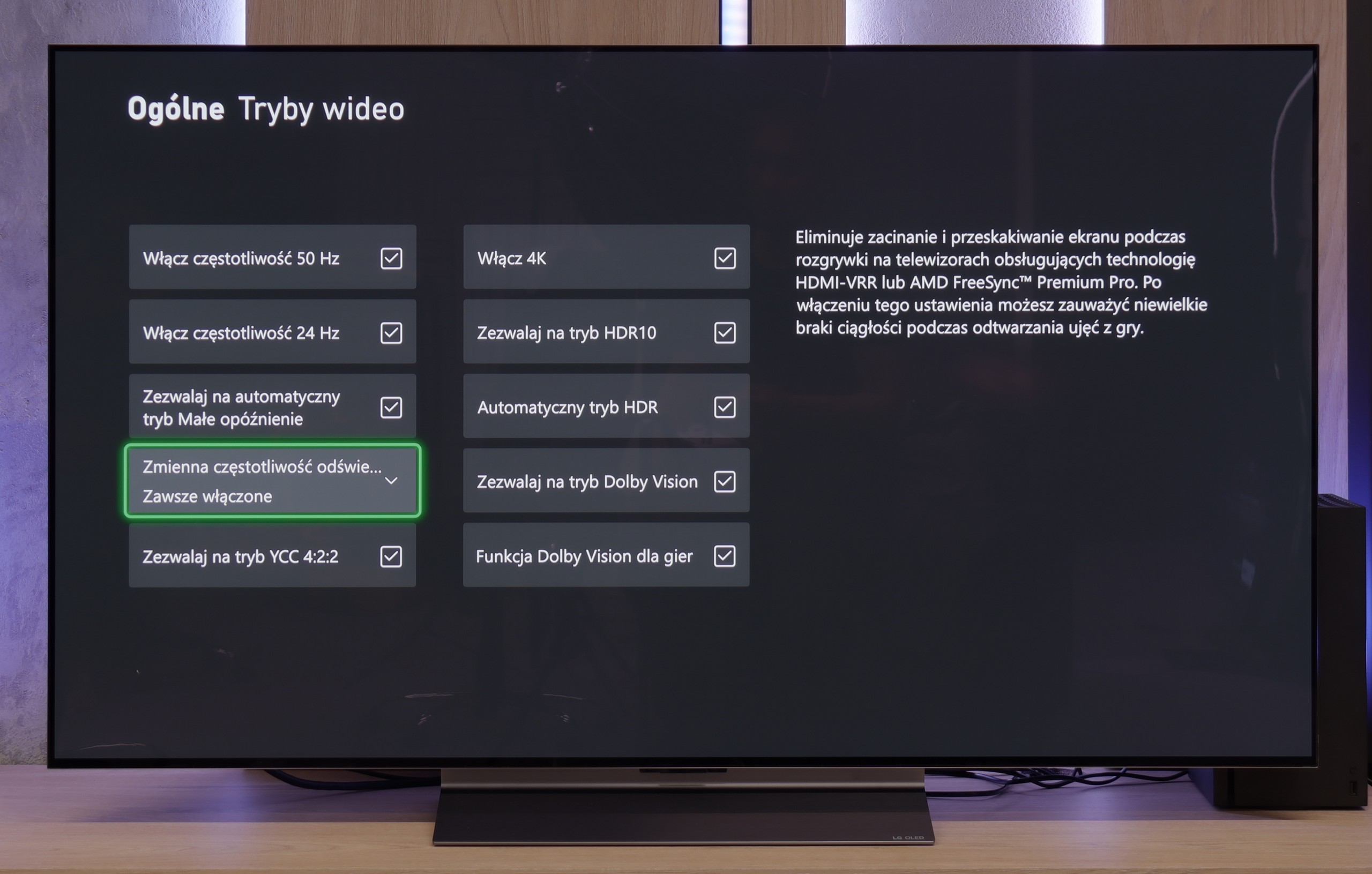

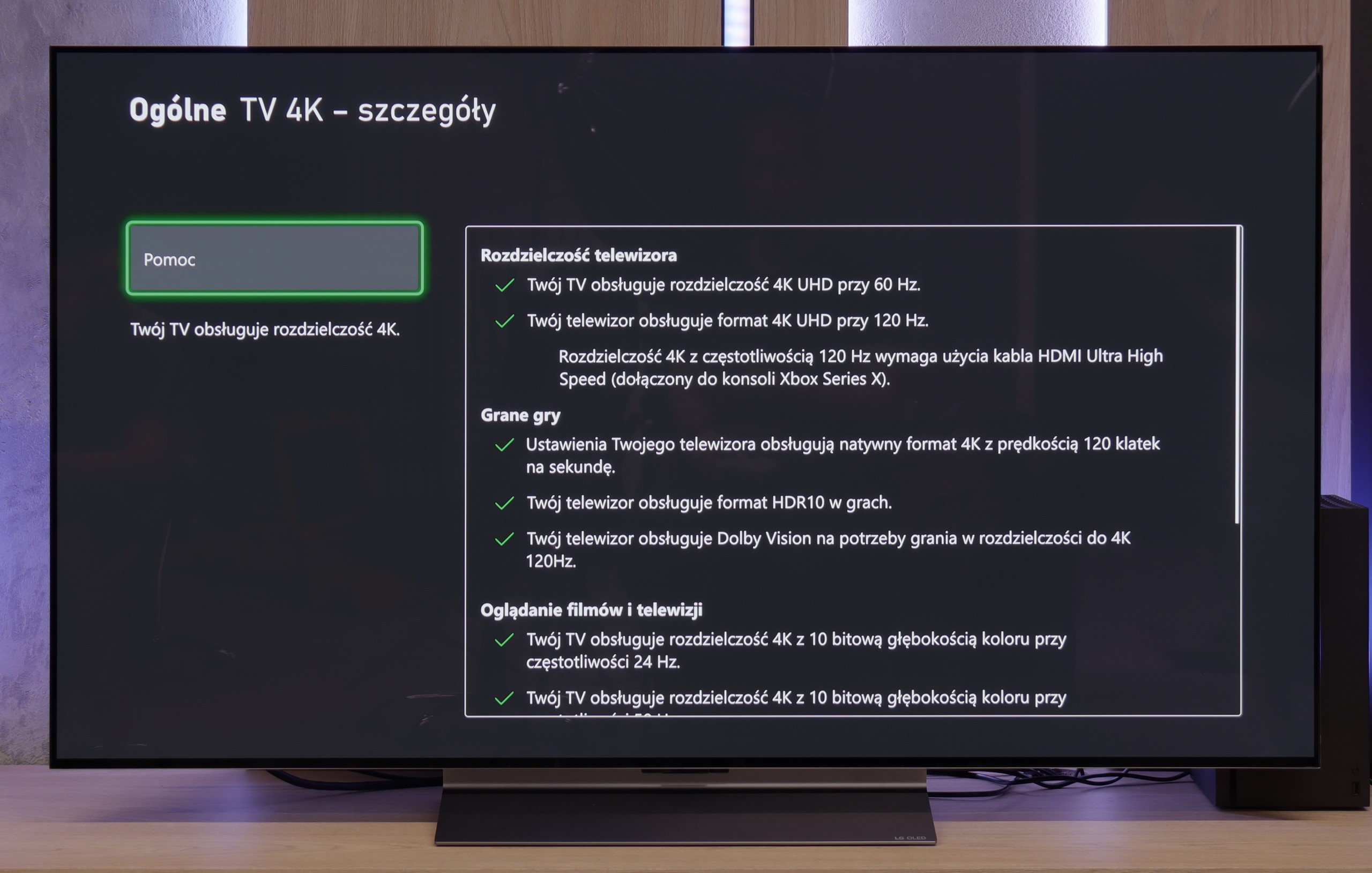

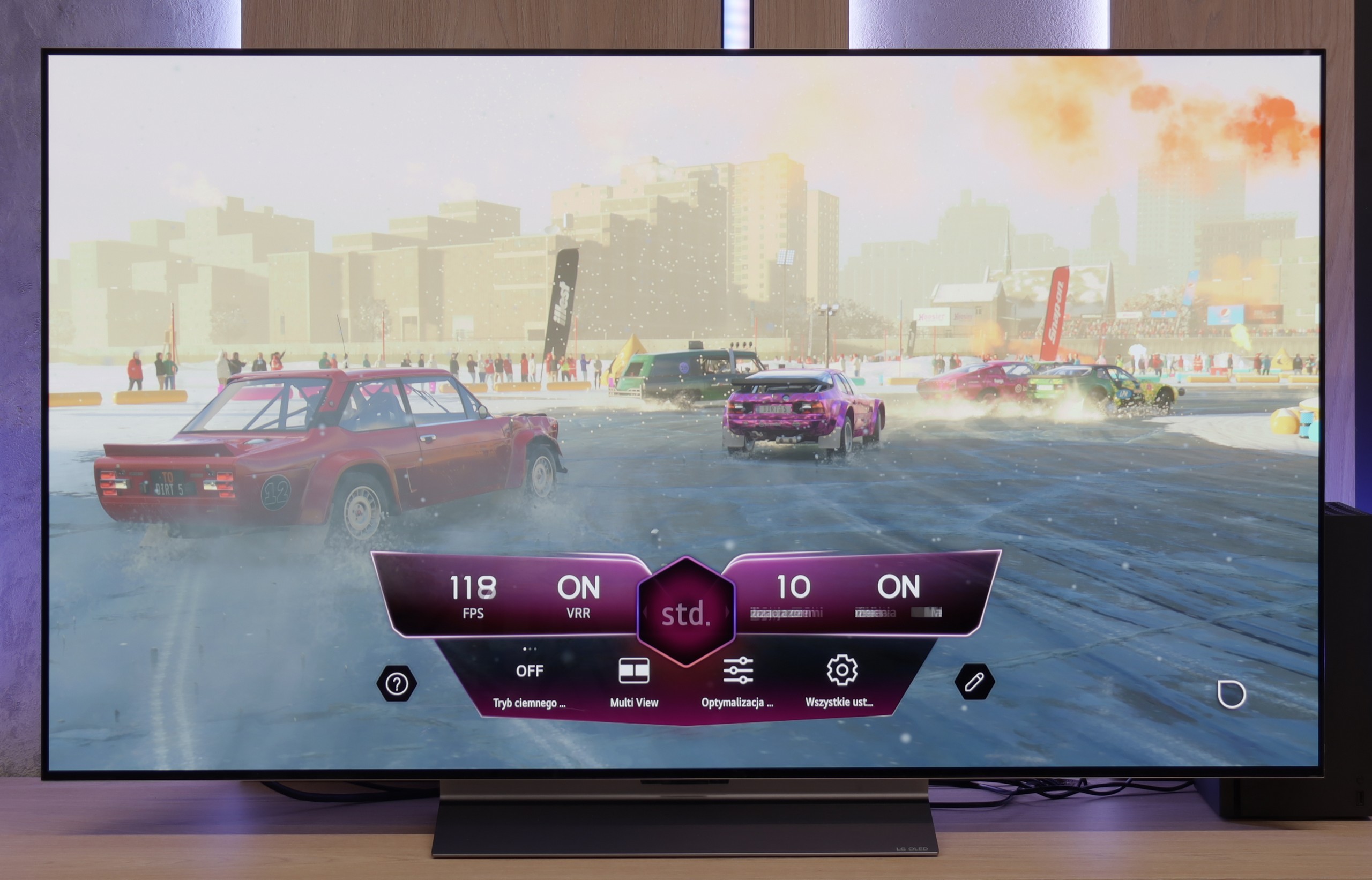

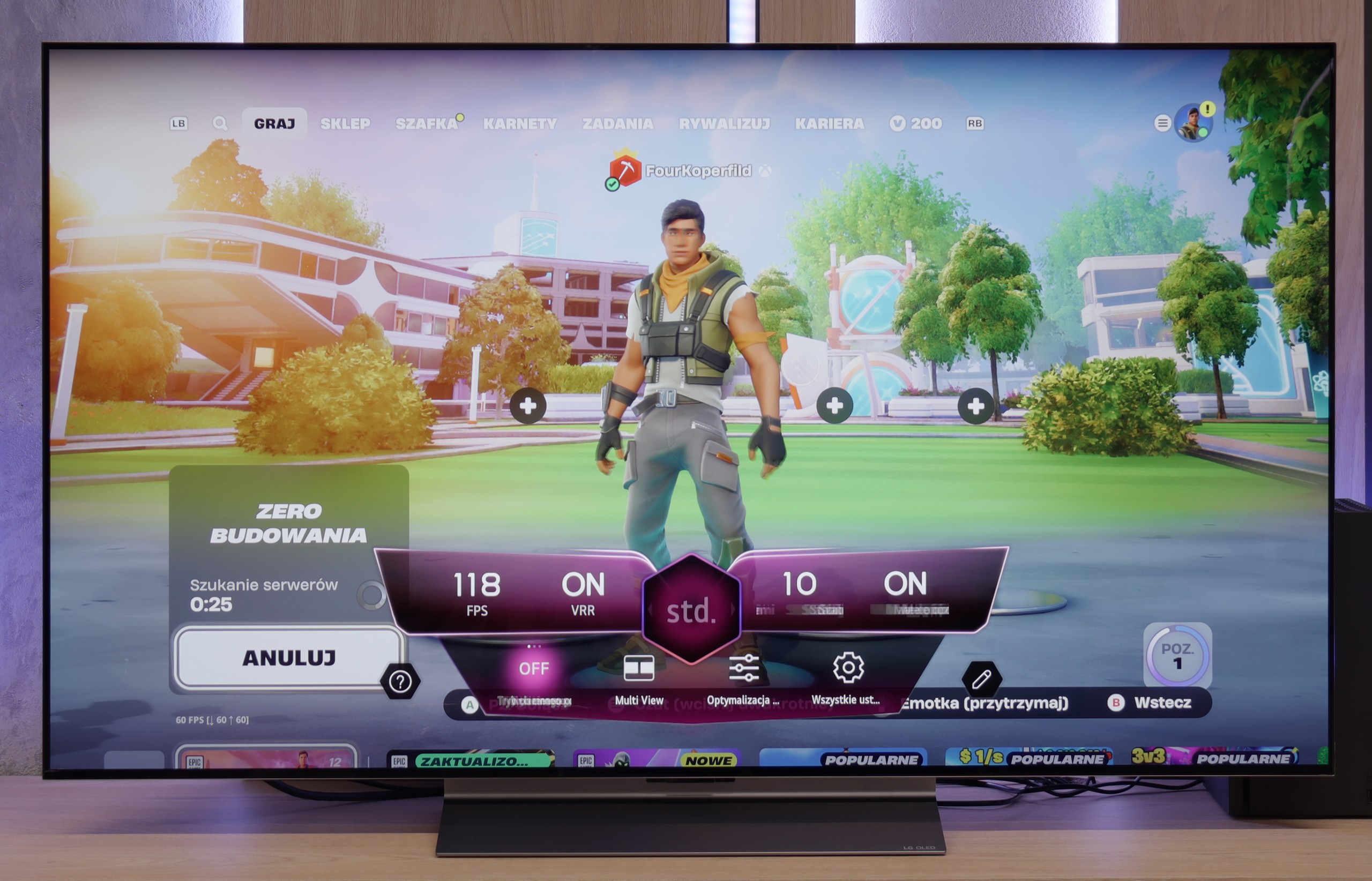
The Frame LS03D in the 2024 version has been equipped with four HDMI ports, but only one of them supports the 2.1 standard with a bandwidth of 40 Gb/s. This is important information if we plan to connect more than one device that requires a 4K@120 Hz signal – for example, two consoles or a console and a gaming PC.
In terms of features for gamers, The Frame truly has a lot to boast about. Here we find ALLM (Auto Low Latency Mode), VRR (Variable Refresh Rate), and HGiG. It is worth highlighting that HGiG has been very well implemented here, which is particularly important as the television does not support Dolby Vision in games (which is only available on Xbox consoles). In this case, HGiG turns out to be a better standard for gaming.
Samsung has also not forgotten about features that enhance gaming comfort. Game Bar is an advanced panel for gamers that allows for quick adjustment of screen settings without the need to dig through the television's menu. We can even change the aspect ratio from 16:9 to a panoramic 21:9, which may be a significant advantage for some gamers.
However, Samsung's biggest ace up its sleeve is the Game Motion Plus feature. This is a special smoothness enhancer dedicated to games that adds additional frames of animation without significantly affecting input lag. The effect is truly noticeable – the image appears much smoother, which fans of dynamic titles will particularly appreciate.
In summary – Samsung The Frame LS03D is a television that offers a solid set of features for gamers. While the limitation to one HDMI 2.1 port may be a downside, the rest of the solutions makes gaming on this television a truly enjoyable experience.
LG C5 is a television designed with gamers in mind – and there isn't a hint of exaggeration in that. It's hard to find anything to criticise here. We have a refresh rate of 144 Hz, full support for VRR, ALLM, and as many as four HDMI 2.1 ports with a full bandwidth of 48 Gb/s. For those who have an Xbox, PS5, Nintendo, and a gaming PC all in one room – there are no limitations, everything can be connected without any hassle.
The HDR configuration for games also poses no problems. The television correctly handles the HGiG mode, which allows for an image that matches the creators' intentions. For those interested, there is also Dolby Vision in Gaming mode, although we still recommend HGiG as the most predictable and "pure" version of HDR in games.
It also features Game Bar, which serves as a "command centre" for gamers. Everything important, from VRR settings, to picture modes, to frame rate information – is at our fingertips. The interface is simple and clear. It may look like it’s from a spaceship simulator, but it serves its purpose and just works; as it should.
C5 is truly a complete set for any gamer.
Input lag
10/10
10/10
SDR
HDR
Dolby Vision
In terms of latency, The Frame LS03D is truly impressive. 13 ms for 60 Hz content and 8 ms for 120 Hz are results that will satisfy even the most demanding gamers. Such low values mean that responses to controller movements are almost instantaneous. In dynamic games, such as shooters or racing games, every fraction of a second matters – this is where Samsung LS03D excels.
The reaction time of the LG C5 to our movements with the controller is exemplary. Regardless of the chosen resolution or frame rate, the delay is so low that in practice it is almost imperceptible. Playing on this television is simply pure pleasure. Some delay is introduced by the Dolby Vision mode, which should come as no surprise – this applies to virtually every television on the market equipped with this mode. Nonetheless, even with Dolby Vision active, the input lag remains low enough that gameplay is still smooth and responsive.
Compatibility with PC
7.6/10
8.6/10

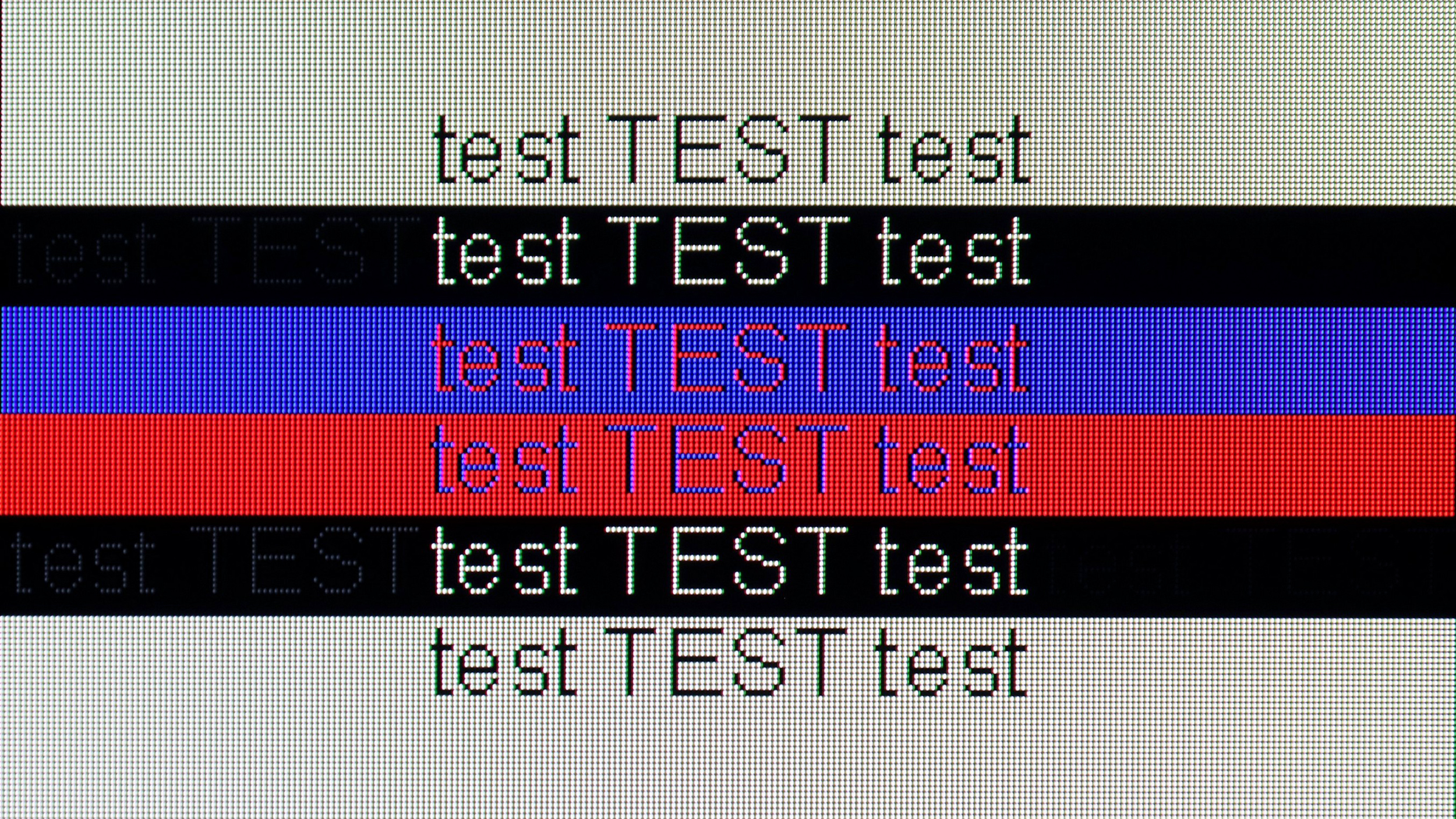
Using a computer on The Frame is truly a pleasant experience. The fonts are clear and well-rendered thanks to support for chroma 4:4:4. There is no blurring or fuzziness, which often occurs in cheaper televisions. Of course, if someone looks very closely at small text, they may notice minimal imperfections, but that's really a minor detail that doesn't interfere with everyday tasks. It is also suitable for PC gaming. The 120 Hz panel, support for G-Sync, and really low input lag ensure that games run smoothly and without delays.
C5 – as we wrote – is a television created for gamers, so playing even on a computer is a real pleasure. The 144 Hz panel, low input lag, and original G-Sync certification only confirm this.
When it comes to work – it is also very good. Fonts are legible, the interface is clear, but it should be remembered that we are dealing with a WOLED panel and a WRGB subpixel arrangement. (slight shadows visible behind the font). Therefore, if someone plans to place the C5 on a desk in smaller sizes like 42 or 48 inches for everyday office work, it is worth checking this for themselves beforehand. For occasional desktop use and primarily for gaming – there are no reasons for concern.
Viewing angles
3.3/10
7.4/10
The viewing angles of the Samsung The Frame LS03D are average, which is typical for a VA panel. Here lies a bit of a problem – this television is supposed to serve as a display for images and works of art, which are not always viewed head-on. When viewed at an angle, colours begin to lose their intensity, and blacks turn into shades of grey. This is not at a level that completely ruins the experience, but if the television is to be placed where it will often be viewed from the side, the effect may be noticeable. It's a shame, as better viewing angles would be a significant advantage for a television of this purpose.
The viewing angles on the LG C5 are nearly perfect. Although they fall slightly short compared to technologies such as QD-OLED or WOLED with micro-lens MLA, the picture quality from a large angle still leaves a great impression. Colours remain vibrant, and the screen does not lose much of its brightness even when set at more demanding angles.
Addressing questions that circulated last year regarding the C4 model – we did not notice any green tints, pinking, or other effects in the case of the C5, which can be read about online. The picture at an angle looked really clear.
TV efficiency during daytime
6.5/10
6.2/10

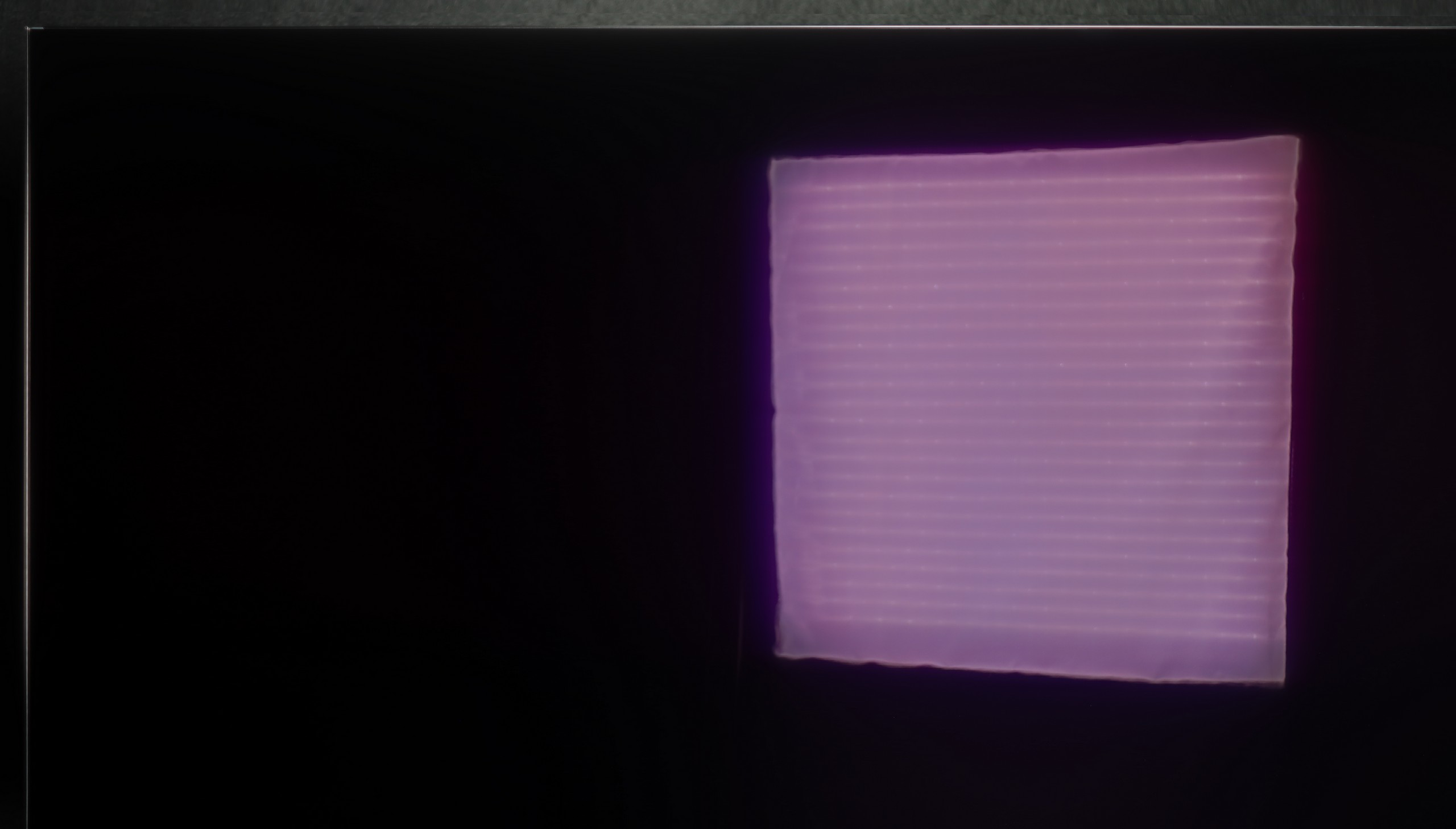

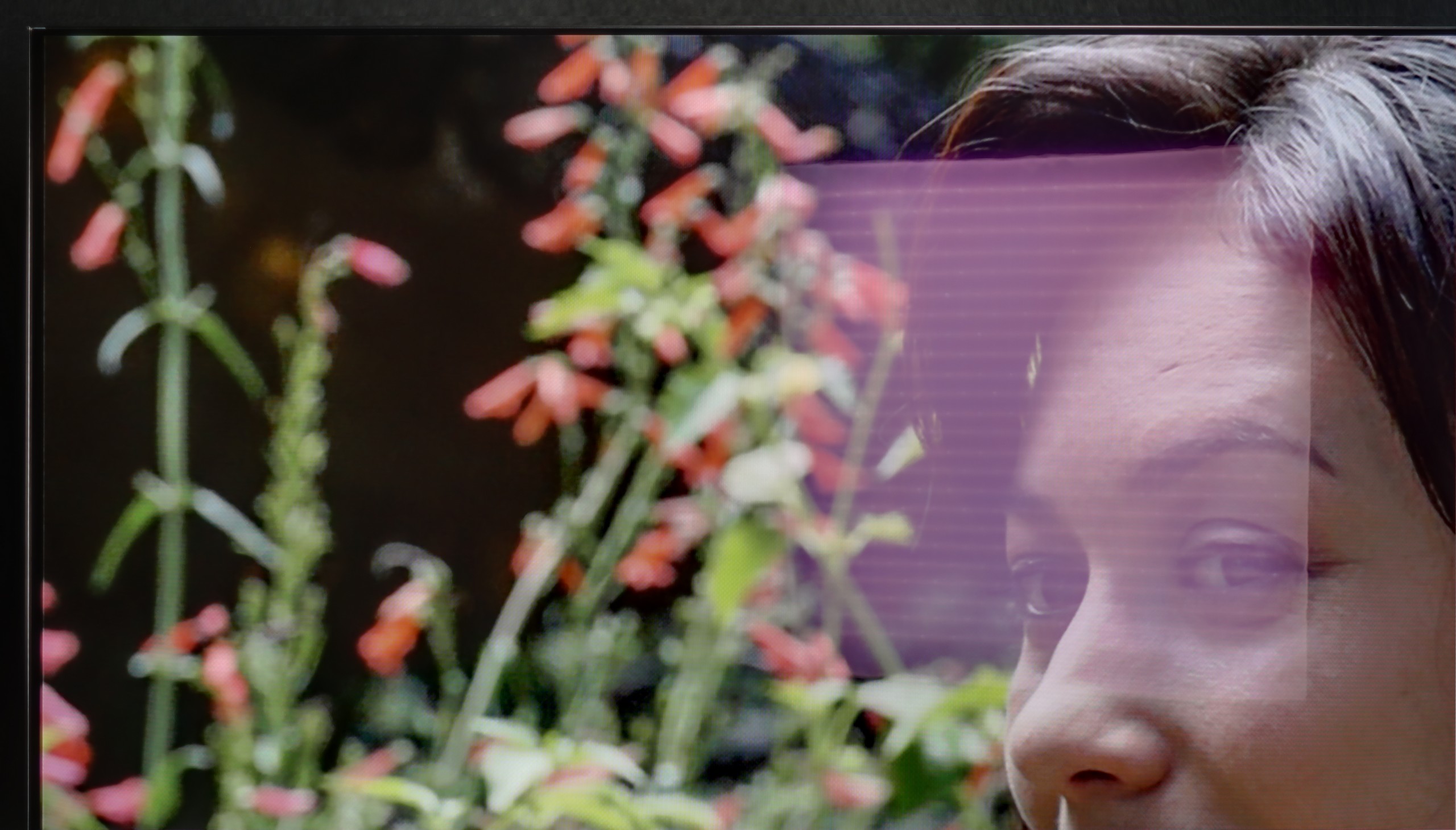
Matrix brightness
Average luminance SDR
LG OLED C5: 435 cd/m2
Samsung The Frame LS03D : 645 cd/m2
Samsung The Frame is equipped with a matte panel that excels at suppressing direct light reflections. This means that even in a brightly lit room, the image remains clear, and reflections do not interfere with viewing. Of course, as is often the case with matte finishes, there is a trade-off – colours lose some intensity, and black may appear more washed out during the day. Fortunately, the television compensates for this with a brightness level of 650 cd/m². This ensures that the image is bright, clear, and well visible even in a heavily sunlit room.
LG C5 is one of the brighter OLED televisions on the market, so it should perform well in moderately bright rooms without major issues. The average brightness in SDR mode is around 450 nits – a value sufficient to keep the image readable even during the day. Importantly, the black does not lose depth and does not become "grey", which can still be an issue with QD-OLED panels.
A greater challenge, however, may be reflections. The WOLED panel used in the LG C5 has a glossy coating typical of this technology, which only partially diffuses reflections. In a well-lit living room with large windows, you can see your reflection on the screen – slightly muted, but still visible. In a very sunny room, it may turn out that curtains or blinds will be necessary to fully enjoy the great picture quality.
Details about the matrix
Subpixel Structure:

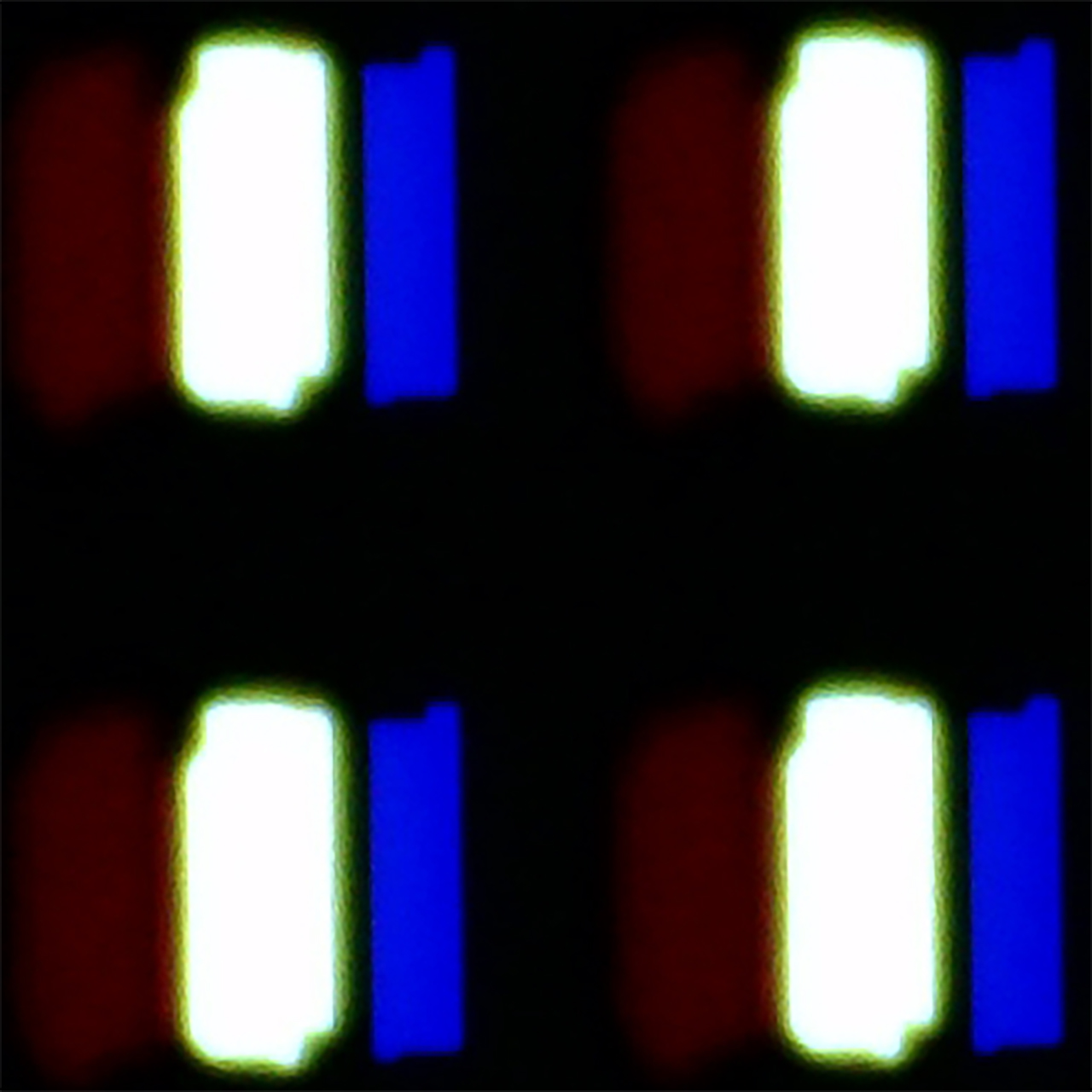
Panel uniformity and thermal imaging:

TV features
7.8/10
7.9/10
- HDMI inputs3 x HDMI 2.0, 1 x HDMI 2.1 40Gbps0 x HDMI 2.0, 4 x HDMI 2.1 48Gbps
- Other inputsIR (remote)
- OutputsToslink (Optical audio), eARC (HDMI), ARC (HDMI)Toslink (Optical audio), eARC (HDMI), ARC (HDMI)
- Network InterfacesWi-Fi 2.4GHz, Wi-Fi 5GHz, Ethernet (LAN) 100MbpsWi-Fi 2.4GHz, Wi-Fi 5GHz, Ethernet (LAN) 100Mbps
- TV receptionDVB-T, DVB-T2, DVB-S, DVB-S2, DVB-CDVB-T, DVB-T2, DVB-S, DVB-S2, DVB-C
Classic features:
- Recording to USB (terrestrial TV)
- Recording programming
- Picture in Picture (PiP)
- RF remote control (no need to aim at the screen)
- Backlit remote control
- Teletext
- Audio only mode
- Bluetooth headphones support
- Simultaneous Bluetooth headphones & TV audio
Smart features:
- AirPlay
- Screen mirroring (Windows Miracast)
- Voice search
- Voice search in native language
- Ability to connect a keyboard and mouse




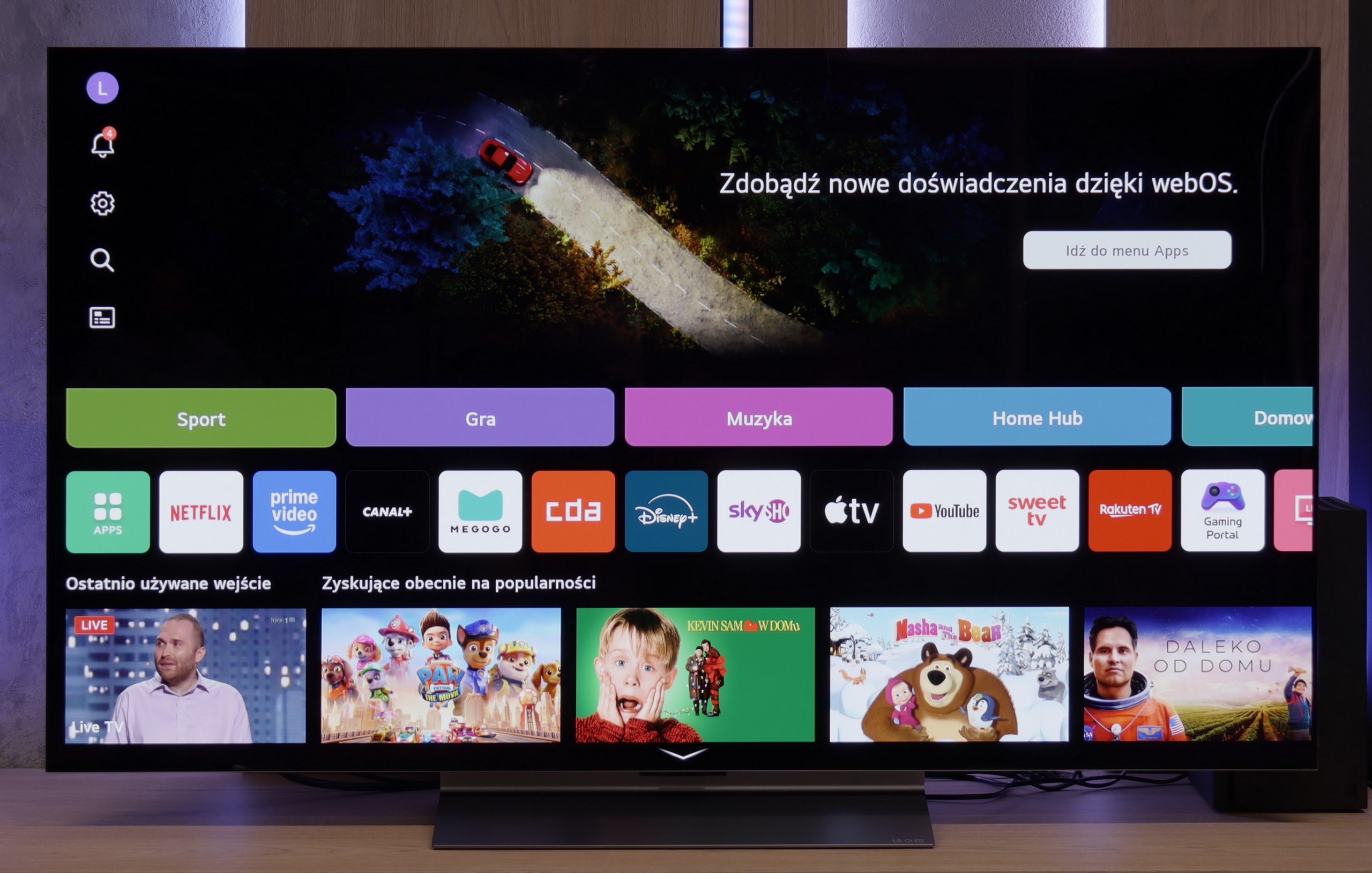
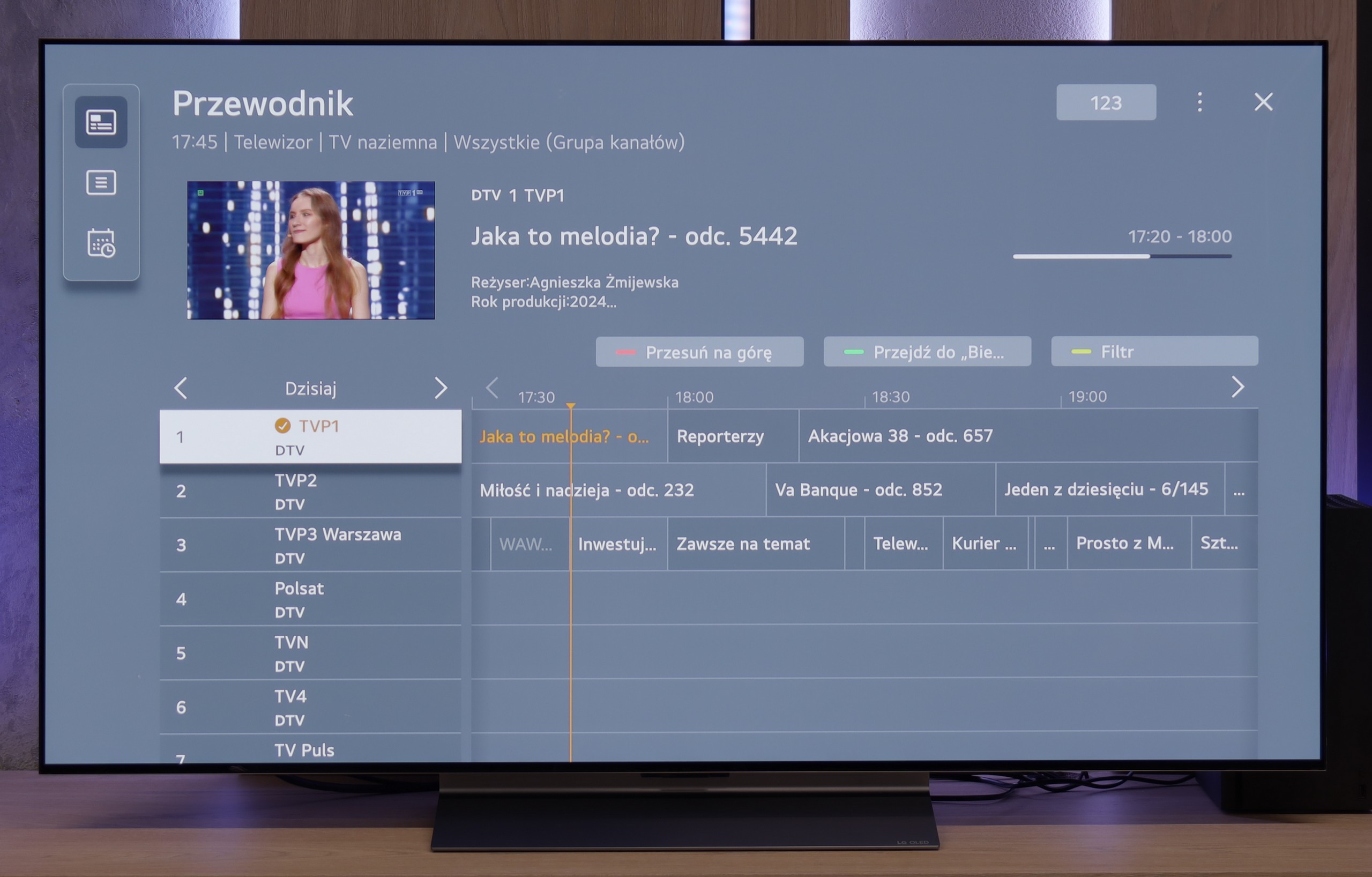
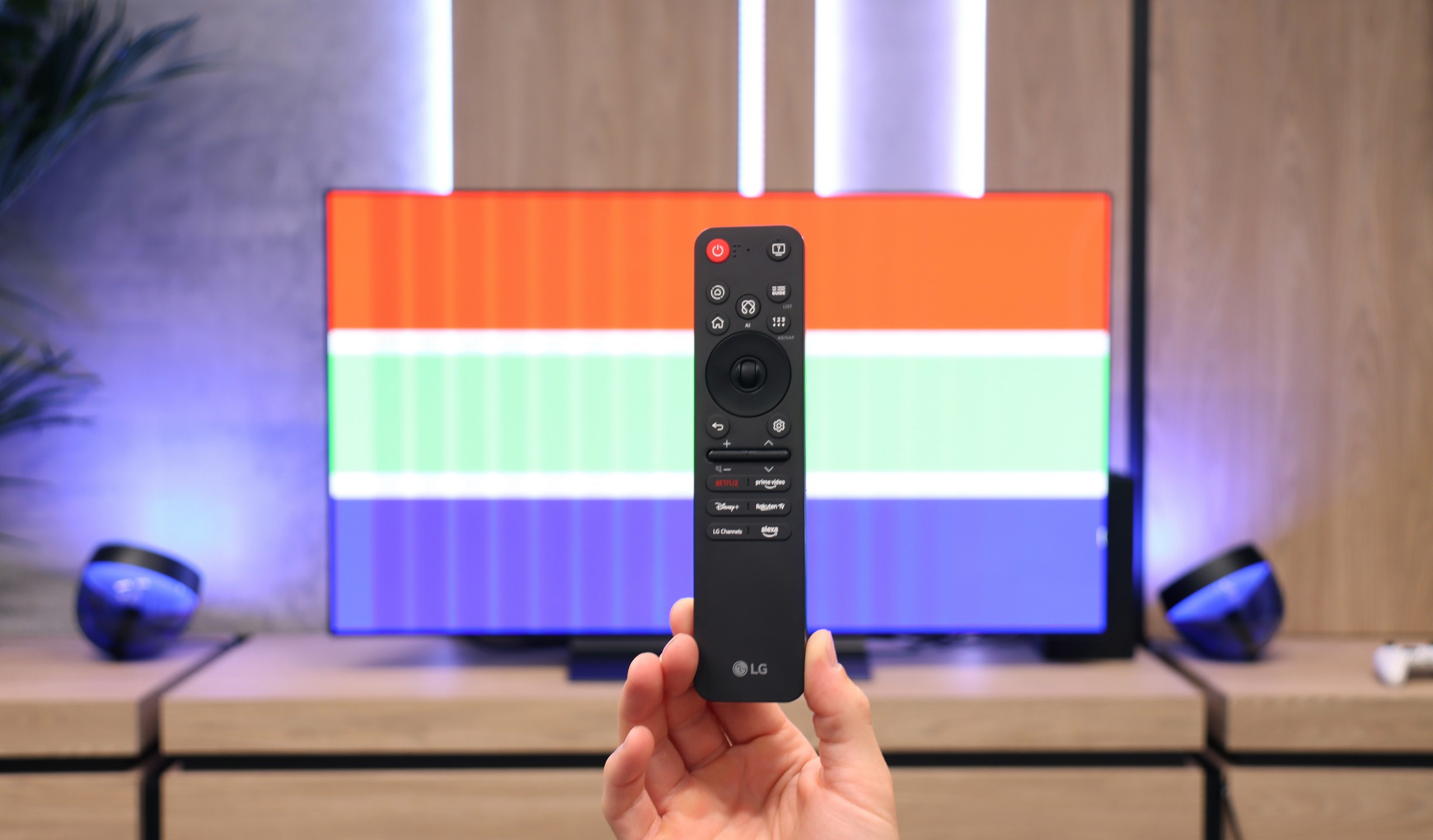
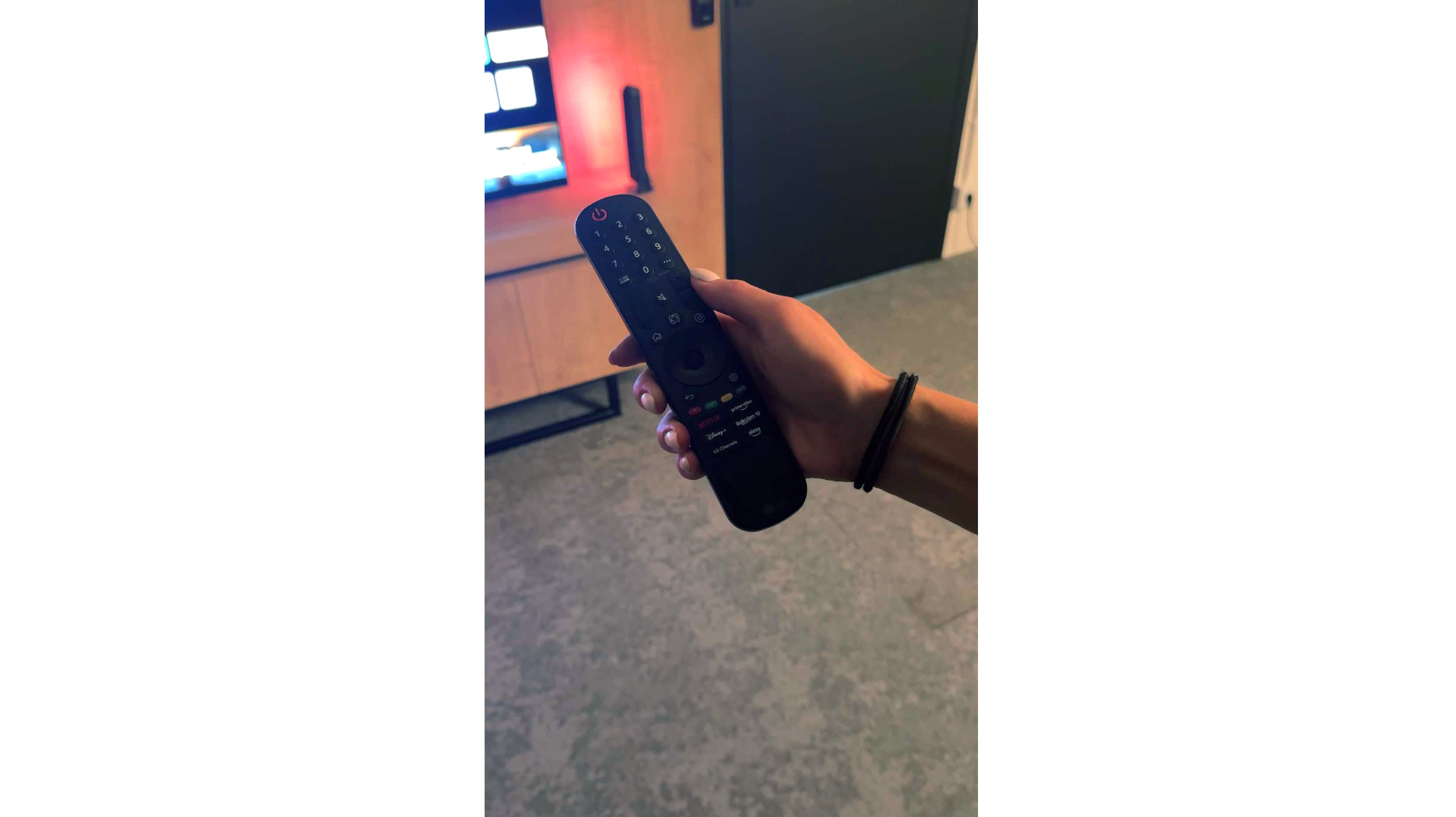
Samsung The Frame LS03D is a television that stands out from other models and is difficult to describe in a traditional way. Of course, it includes all the standard Smart TV features thanks to the Tizen system. The system operates responsively, is comprehensive, and offers a wide selection of applications. The remote control supports voice commands in Polish, and additional devices can be connected via Bluetooth – just like in many other televisions. But that's not the essence of this model.
The greatest strength of Samsung The Frame is its design. The "Art" mode allows you to display thousands of high-resolution images, which, combined with a matte display, look truly exceptional. The effect is surprisingly realistic and hard to compare with any other television.
The bezels may not be the thinnest on the market, but you can customise them in terms of colour and style to perfectly blend with your interior. (Sold separately) And while the bezels themselves are not ultra-thin, the entire construction is sleek and elegant. The wall mount, which is included (its value is approximately £80), also deserves special attention. With it, the television can be mounted practically flat against the wall, with no gap, which further emphasises the "picture" effect.
And what about the cables? Samsung thought of that too. The Frame has been equipped with a One Connect module – an external box where all devices are connected. Only one nearly invisible cable runs to the television, which transmits both the signal and power. The box can be easily hidden in a cabinet or behind furniture, which means nothing disrupts the aesthetics of the interior.
Samsung The Frame LS03D is more than just an ordinary television – it is a thoughtfully designed decorative element that combines the modern functionality of Smart TV with exceptional design and practical solutions. Although it lacks typical features such as USB recording or PiP, it is not a model created with a classic approach to television in mind. LS03D the frame is a television that is easy to love for its innovation, originality, and how wonderfully it fits into any interior.
Classic TV functions:
In terms of classic television functions, the LG C5 performs really well. Here we have the ability to record programmes to USB from built-in DVB-T(2) tuners, teletext support, an EPG programme list, as well as seamless pairing of headphones via Bluetooth. For many users, these are still very important elements of daily TV use – and here LG doesn’t lack anything except for the PIP function. It is also worth noting the remote control, or rather... the different versions of the remote. In our test, we used the C54 model, which is equipped with the new version of the Magic remote. It resembles Samsung's minimalist approach – there is no numeric keypad or "source" button, but it looks modern and is comfortable for daily use. On the other hand, other variants, such as C5ELB, may be sold with an older version of the remote – a more classic one, with more buttons and a numeric keypad. Some will find it more practical, while others will consider it outdated. In short: quite a bit of confusion, so it's worth checking the model suffix before making a purchase.
Smart TV:
Regardless of the remote's version, we operate the same system – WebOS. This is one of the most enjoyable solutions in the Smart TV world. An intuitive menu, quick operation, and support for popular features such as AirPlay, screen mirroring, and voice assistant make the system perform very well on a daily basis. Additionally, cursor control via the gyroscope in the Magic remote remains one of the most convenient forms of navigation in televisions. There are really many applications available – Netflix, Disney+, HBO Max, Apple TV, and many others. However, it should be noted that this is not a system based on Android/Google TV, so it might happen that we simply won’t find some less popular application in the LG store.
Playing files from USB
9.1/10
8.8/10
Supported photo formats:
Maximum photo resolution:

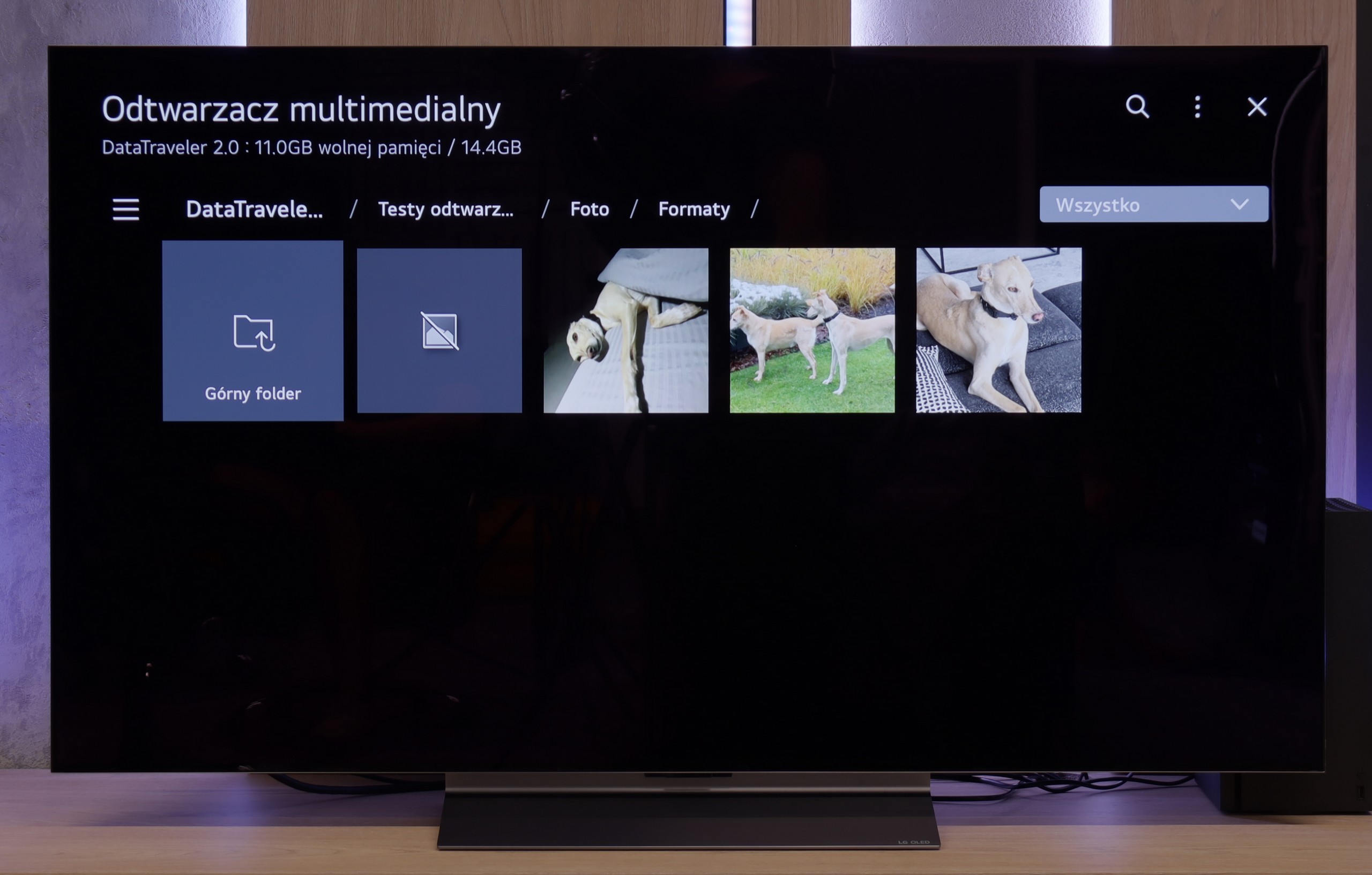
The built-in media player in Samsung The Frame handles most popular video and audio formats without major issues. Video files, even those with subtitles that we have added, play smoothly and without interruptions. The same goes for audio files – here too, there are no significant surprises. The situation is somewhat worse when it comes to handling photo formats. The built-in player has certain limitations and does not support all possible types of graphic files. However, nowadays, most people use wireless photo transfer, so for many users, this will not be a major problem.
The LG C5 is equipped with quite a decent built-in media player, which should meet the expectations of most users. It supports popular video and audio formats, handles subtitles in SRT format, and opens most graphic files without major issues.
The interface itself is fairly simple and intuitive – it doesn't surprise, but it also doesn't cause difficulties in daily use. Of course, it's not on the level of external players or applications from Google TV, but for basic playback of films from a pen drive or hard drive – it is more than adequate.
Apps
8.7/10
9.1/10














































Sound
5.8/10
7.2/10
- Maximum volume-84dB
- Dolby Digital Plus 7.1
- Dolby True HD 7.1
- Dolby Atmos in Dolby Digital Plus (JOC)
- Dolby Atmos in Dolby True HD
- DTS:X in DTS-HD MA
- DTS-HD Master Audio
The sound on the Samsung The Frame is… well, quite average. The slim design of the television, while looking impressive, doesn’t allow much space for decent speakers. As a result, the sound is flat and lacks dynamism – exactly like most televisions in this category. Samsung is clearly aware of this, as it offers a special series S of soundbars, specifically created for its "lifestyle" televisions, which includes the The Frame.
For such a slim television, the LG C5 surprises with quite good sound quality. Within its thin casing, a set of specific speakers has been incorporated, which produce clear sound, with well audible details and – surprisingly – a light yet noticeable bass. It is more than sufficient for everyday viewing, and in many cases, it might even offer a pleasant surprise. It is a pity that this year LG decided to completely eliminate support for DTS codecs. For most people, this will not be a problem, but if someone uses Blu-ray discs and enjoys this format – especially in its more advanced versions – they may feel its absence. In such a case, an external amplifier or soundbar with appropriate audio support remains the option.
Acoustic Measurements
No acoustic data
84dBC (Max)
75dBC
